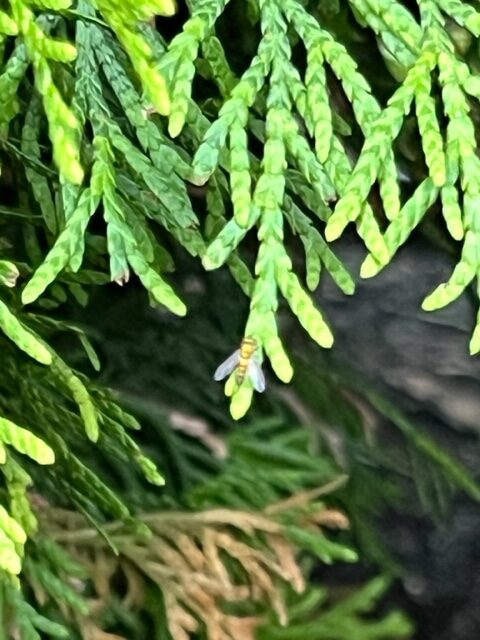
3.5 weeks ago I planted 18 6-foot emerald cedars in my backyard in hopes of creating a privacy hedge over the years. In the last 1-2 weeks I’ve noticed browning and dry leaves across all trees in various areas. I dug each hole about 12″ to level the top of the root ball with the soil and also dug about 1.5x wider than the root ball. I placed a handful of bone meal in each hole with some triple mix and filled with the native soil. I have put a 2-inch layer of mulch around the trees. Originally I put the mulch towards the trunk, but have since learned that is a no-no, so have now moved the mulch back away from the trunks 3-4 inches. They get plenty of sun, aside from early in the morning and late in the evening, they are in full sun. The first 1-2 weeks after planting we got a lot of rain, and on days when it didn’t rain I watered them daily. Now realizing that I might have been overwatering them, I have since switched to doing a deep watering once a week (although questioning if I should maybe do twice a week in a dry/hot week?). I have looked for insects and don’t see spider mites when rubbing leaves against white paper. The one thing I have seen quite a bit of are these tiny yellowy/green flying insects that seem to like the leaves and wondering if maybe these are the culprit? Usually a handful of white moths hanging around some trees too, but not an alarming amount. The leaves that have browned are very dry to the point some crumble when touched. I have also noticed that on some twigs, the “connection” to the main branch is very weak to the point that it almost looks limp and broken (damage from transport or just dying?). Thanks for your help!
Thank you for contacting Toronto Master Gardeners. It sounds like you have been learning a lot about taking care of Emerald Cedars (Thuja occidentalis ‘Emerald’; also known as Thuja occidentalis ‘Smaragd’).
Emerald cedars are popular trees to plant and you will find a variety of articles addressing emerald cedar browning on the Toronto Master Gardener website.
Aphids come in a variety of colours including yellow-green so it is possible that you have an aphid infestation. You should be able to see small tiny white eggs on the underside of the leaves and shiny honeydew which is secreted by aphids. Using a garden hose with a high pressure nozzle to knock off the aphids is an environmentally safe way to get rid of them, although this method requires a thorough job so you don’t leave any insects behind on your trees. This article from the University of Maryland may be helpful in identifying and treating for aphids should these be the culprit.
The tiny yellow green flies appear to be hover flies and are considered beneficial pollinators.
The white moths you are noticing could be an indicator of Cedar Leafminers (Argyresthia spp.). Larvae of this insect overwinter in the leaflets and in the spring they damage the foliage by “mining” through the leaves. By the end of May these caterpillars have formed cocoons and small white moths emerge by the end of June so the timing seems about right for the white moths you are seeing. This website from the Ontario Government describes these insects in more detail. Pruning is one way of getting rid of any potential eggs prior to next spring when the cycle begins again.
Additionally, in this article from The Spruce, a variety of other reasons are given for when the tips of cedar branches turn brown such as diseases caused by fungus and environmental factors. (As the article describes, browning on the inside of the trees is normal in the spring and fall and not usually a sign of a problem.)
To finish, given the amount of time, effort and money you have already invested in creating this privacy hedge for your yard, I would recommend you contact a licensed arborist who can make a definitive diagnosis and can offer a range of remedies in keeping with the extent of the damage. I wish you the best of success with this gardening project.

